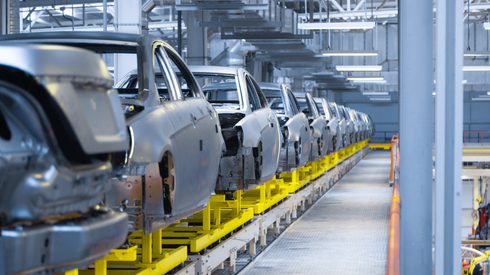But a deal between BHP and Lundin Mining suggests that might be about to change.
In total, BHP and Lundin Mining spent $3 billion to ensure they both hold 50% stake in two adjacent copper deposits in the Argentine Andes, signed on July 30. This follows BHP’s failed $38 billion bid for Anglo American in May.
Both companies previously owned shares in Filo Corp, which owned one of the deposits, and through this deal they bought out the remaining shares in the company. BHP also paid $690 million to Lundin Mining to add Lundin’s neighboring Josemaria deposit to the joint venture.
So now the BHP-Lundin Mining joint venture will combine the two projects to create a more efficient mining complex that can share infrastructure.
“The deal is an endorsement not only of the resources in the ground but in the legislative framework they have there now in Argentina,” Fastmarkets copper analyst Andy Cole said.
Unattractive environment
Argentina only has one small active copper mine, which produces 4,000 tonnes per year of copper. That is dwarfed by the 5.3 million tpy of copper the International Copper Study Group estimates Argentina’s smaller neighbor Chile produces.
Miners have found plenty of exciting copper deposits in Argentina. Indeed, local mining association CAEM (Argentine Chamber of Mining Companies) counts 20 large-scale copper projects that have been advanced in recent years.
But unwelcoming political and economic conditions have prevented miners from committing the billions of dollars needed to build them. That is a marked contrast to Argentina’s lithium sector, which has seen a slew of new deals backed by international investors.
One of the main stumbling blocks was that copper projects tend to be larger and far more capital-intensive than lithium operations. Traditionally, copper mines are financed through loans that the mining company promises to repay with the mine’s future earnings.
Yet in Argentina strict capital controls and a web of government-imposed artificial exchange rates meant that mining companies would take a big hit when sending money to pay international creditors.
Regulatory landscape improves
In June the government of Javier Milei looked to resolve that issue with new legislation – the Incentive Regime for Large Investments (RIGI) – which creates tax breaks and currency security for large projects, including mining.
The deal is significant not just because of the mine that might be built but also because of the other projects that could follow suit. Indeed, other mining companies with significant copper assets in Argentina are already using the BHP-Lundin deal to encourage investors to back their projects. For example, McEwen Copper Corporation, which has the Los Azules copper project in Argentina, mentions the BHP-Lundin deal on its website.
There are eight particularly advanced copper projects, identified by CAEM, that will need $22billion of investment to develop.
Fastmarkets’ Cole identified El Pachon, MARA, Altar, Los Azules, San Jorge, Josemaria, Taca Taca and Filo del Sol as key copper projects in Argentina. “They add up to 1.349 million tonnes per year of capacity in total, compared with zero tonnes of production since 2018. That’s a big change and a lot of potential.”
However, Cole cautions that there is still a lot of uncertainty before declaring a mining boom in Argentina. “In the timeline of the next 10 years (to 2034 inclusive), our forecasts only envisage Josemaria and MARA as being advanced enough to start production. That’s 400,000 tonnes per year, or less than a third of that total capacity.”
But even if only those two projects were built, 400,000 tonnes is a massive increase on Argentina’s current copper output of 4,000 tonnes.
Any significant new production would arrive in a market that is currently expecting a supply deficit.
Inform your copper strategy with metals price forecasts and analysis for the global copper industry. Contact us today to find out more about our copper long-term forecast.






